Mysuru (Mysore), KARNATAKA :
There are many miles that separate Bengaluru from Haifa. But our city’s connection to this distant Mediterranean port town goes beyond geography to that of the spirit. It is where Mysorean cavalrymen earned honours and distinguished themselves during World War I. The town also became a final resting place for many who never returned home.
These men on horseback were the inheritors of an older legacy. Both Hyder Ali and his son Tipu Sultan, the 18th century rulers of Mysore, were known for their famous cavalry, the `Savar’ that had fought on home territory in the Anglo-Mysore Wars almost 150 years ago.
The Mysore Lancers (says a commemorative souvenir) were raised from what remained of this cavalry following the 4th Anglo-Mysore War in 1799.
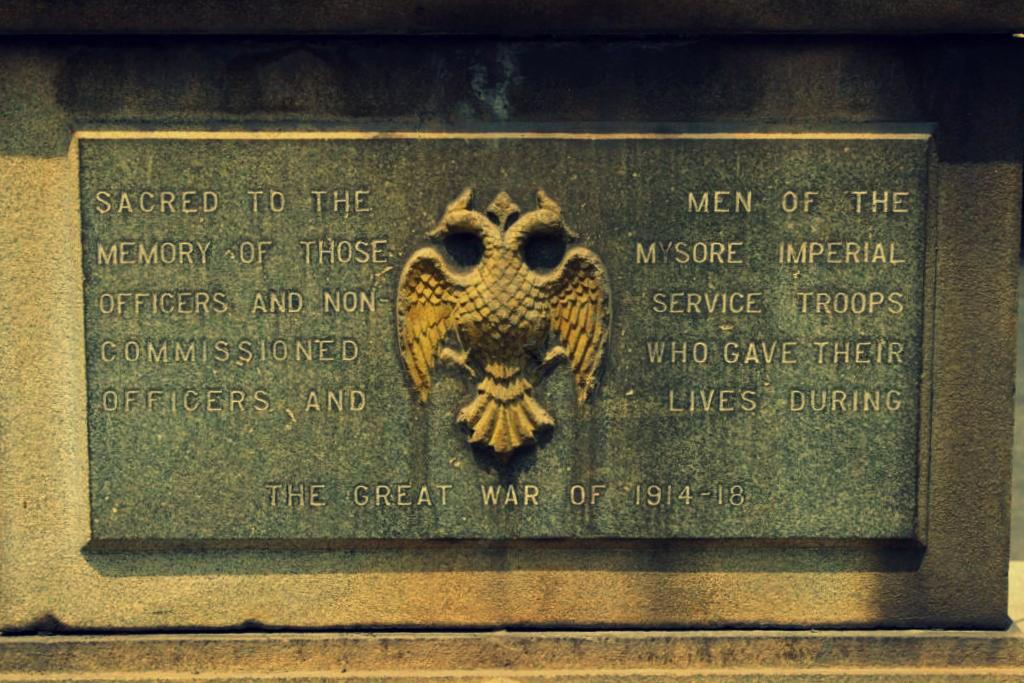
The regimental insignia and Mysore’s royal emblem, the two headed Ganda Berunda eagle
Bengaluru’s equestrian legacies also extended beyond the military; the Bangalore Turf Club is a heritage institution and the Race Course that was initially located near Domlur was as old as the Cantonment, Horse riding in Cubbon Park was `de rigeur‘ till the early 1900’s, many large houses had private stables and British Commissioner Sir Mark Cubbon even built a new home beyond Cubbon Park to accommodate his beloved horses!
Military forces in India’s princely states were maintained purely as a formality for a very long time following 1857.
But Viceroy Lord Dufferin’s landmark speech in Patalia (1888) signalled a change.
The Mysore (Mysuru) Maharaja Chamarajendra Wodeyar X was one of the first to raise a military force (including an Infantry and Transport Corps) capable of fighting alongside Imperial troops anywhere in the world. Major Mellis arrived here in 1890 to rearrange the two existing Silledar regiments into the Mysore Horse based in Mysore, and the Bangalore based Mysore Imperial Service Lancers (Mysore Lancers).



The Investiture Ceremony: “On the arrival of the Viceroy at the Imperial Service Lines, he was received by Dewan Krishna Murthi and conducted to a position near the saluting flag. After the horses of the entire regiment had lain down on the word of command so as to form covers for their riders in action, the regiment formed mass and the men dismounted and left their horses entirely alone with the rein passed through the girths. Rockets, carbine discharges and other noises were then made to test the training of the horses and except one or two horses which broke away, the remainder kept perfectly steady and unconcerned. After galloping past and advancing in review order, the Lancers cheered His Excellency. The Viceroy remarked that the display he had seen proved the excellence of the training of the horses and the special attention paid to the matter by Colonel Desaraj Urs… The manoeuvres subsequent to special show in connection with the horses reflected great credit, said His Excellency, on the regiment.” –M Shama Rao, Modern Mysore
The Mysorean, with his “superior physique” was also “specially noted for his endurance and hard work in distant countries and under the most trying conditions of climate and fatigue.”* And so, as part of the 15th Imperial Service Cavalry Brigade (this included the Patiala, Jodhpur and Hyderabad Horse) the men left Bangalore on 13th October, 1914 under the field command of Lt.Col. Chamaraj Urs Bahadur.
They were accompanied by Special Officers Major MH Henderson and Lt. K Evans-Gordon and Colonel J. Desraj Urs (Commander-in Chief of the Mysore State Forces and brother-in-law to Maharaja Sir Nalwadi Krishnaraja Wodeyar IV).
The men in the distinctive black head collar rope, black and white lance pennant, crossed lance badges on the chain mail epaulettes and the royal Ganda Bherunda insignia of Mysore disembarked to defend the Sweet Water Canal and undertake reconnaissance duties to the east of the Suez Canal.
Many of us in the city can proudly trace family who in 1914, were a part of the largest volunteer army in the world!
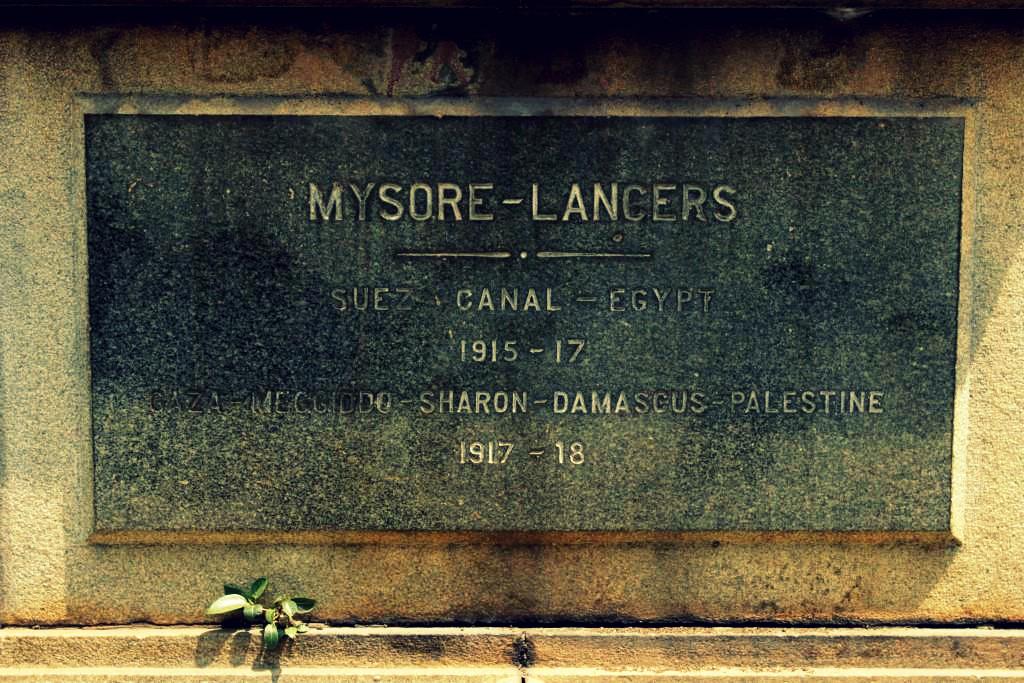
Fans of a sun tanned Peter O’ Toole in the film `Lawrence of Arabia’ will know that our Mysorean men and the legendary TE Lawrence were both part of a WWI force commanded by Field Marshall Sir Edmund Allenby. But off screen conditions were very tough. Water sources were scarce. Thousands of cavalry horses and Transport Corps animals perished at various stages-en route, during combat and post-war.The emaciated and weak were left by the road to be picked up and (hopefully) rehabilitated by the Remount and Veterinary Corps.Most were not so lucky.
Much has been written about the Battle of Haifa where Mysorean cavalrymen braved German and Austrian guns as they charged alongside the Jodhpur Lancers to route an artillery battery located on a hill above the town.
Mysore’s two headed eagle also altered history at Gaza, Jordan Valley, Sharon, Megiddo, Damascus and Palestine. Their roles in these decisive battles saw the officers, including Captain B. P. Krishne Urs, 29 year old Mir Turab Ali and Risaldar Subbaraja Urs, and their loyal horses receive a hero’s welcome in 1920.
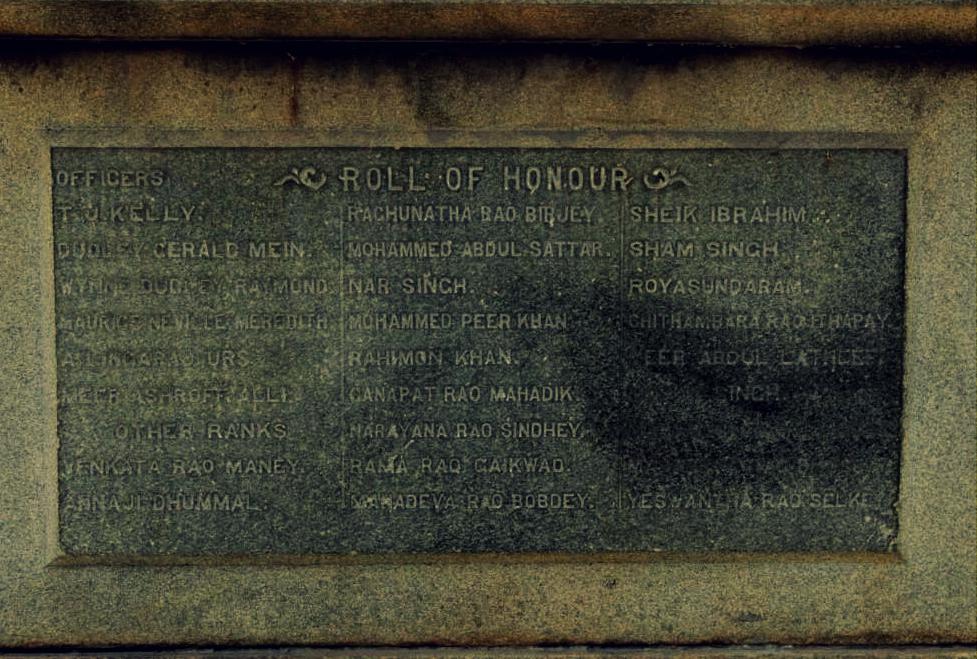
Sirdar Bahadur Lt.Col. Chamaraj Urs succeeded the distinguished Col.J Desraj Urs to the post of Commandant-in-Chief in 1919.
The horsemen were then reconstituted into the New Horsed Cavalry Regiment, raised in Jaipur on January 1st, 1953 under the special dispensation of Prime Minister Jawaharlal Nehru.It was named the 61st Cavalry a year later. It is the only horse cavalry regiment in the world and is equally well-known for its indomitable equestrian sportsmen.
My grand aunt, Mrs. Syeda Mirza tells me that her husband, my grand uncle the late Major Mohammad Mirza, a Bengalurean 61st cavalryman, dashing polo player and nephew of Sir Mirza Ismail, Diwan of Mysore (1926-1941) commanded the elite President’s Bodyguard for Dr.Rajendra Prasad and Dr. S Radhakrishnan in the 1960’s. He was also in the Ganganagar Sector with the 61st Cavalry during the 1971 War.
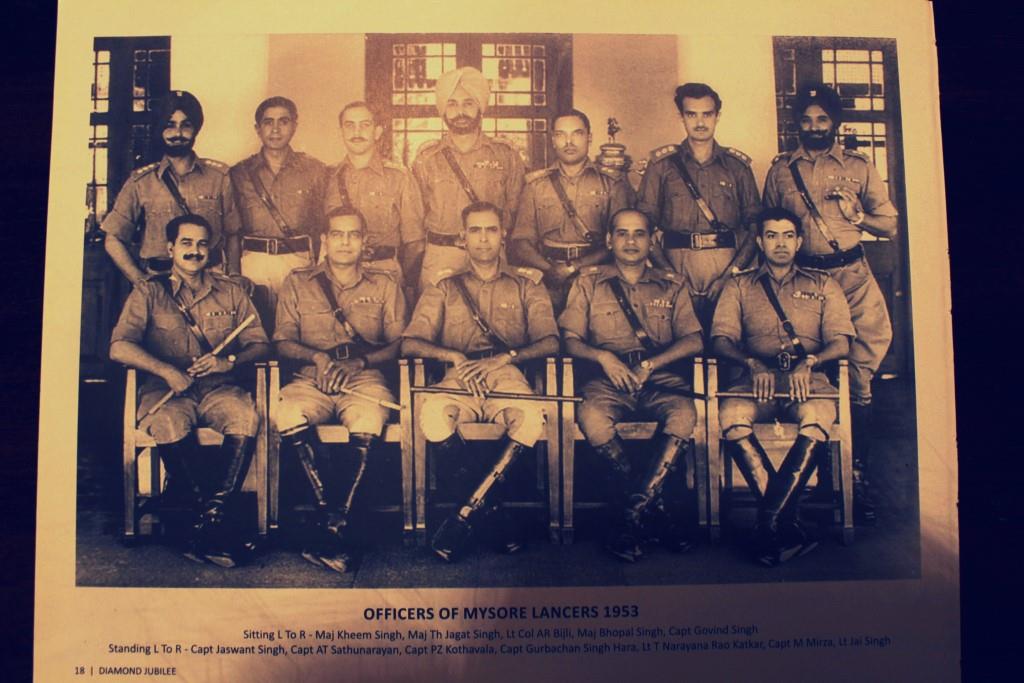
Standing second from right: Major Mohammad Mirza. Photo Source: Sixty First Cavalry Diamond Jubilee Souvenir, courtesy: Mrs. Syeda Mirza
“I was returning to Jaipur with the children after visiting my parents in Hyderabad” she says “and hired a porter to help with the luggage. He deposited me near the army vehicle that had come to receive us, and refused to take any payment. He said he could not take money from someone whose husband was fighting for the country.” She adds, “those were very tough times for wives and families.With no mobile phones or connectivity like it is today, we had no way to stay in regular touch with our loved ones.We just had to manage as best as we could on our own.”
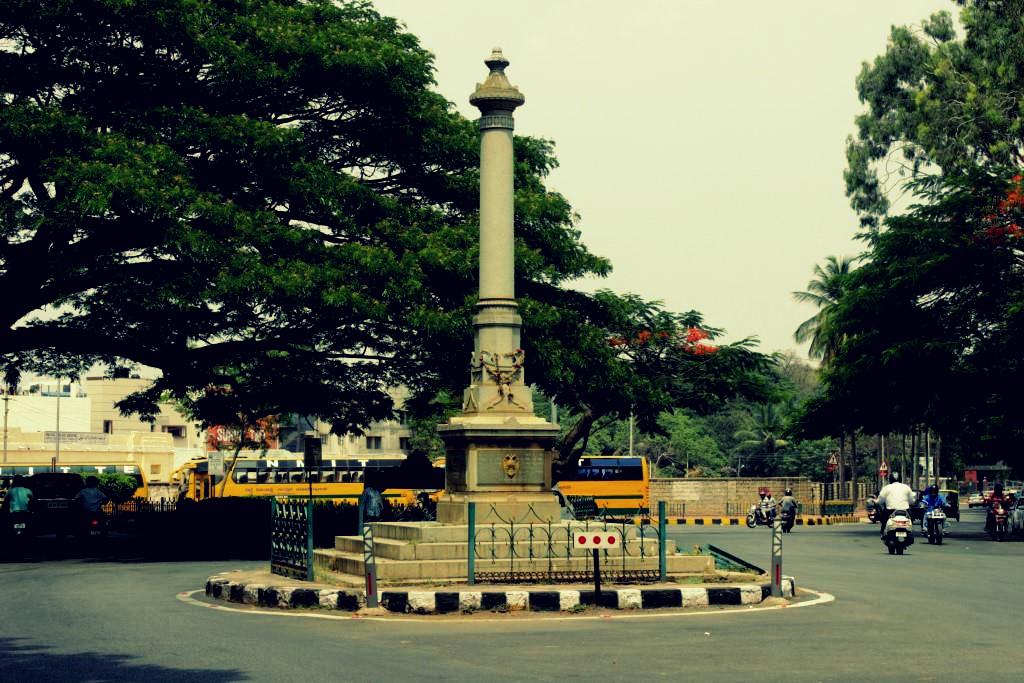
While a tribute to Indian cavalrymen is visibly embedded at Teen Murti Circle, New Delhi, a smaller Memorial Column on Col. Desraj Urs Road in Bengaluru’s Munireddy Palya stands overshadowed by the massive TV Tower nearby. The long forgotten structure lists all the brave men including officers Captain A.Lingaraj Urs (son-in-law to the Field Commander) and a Meer Ashroff Ali who lost their lives upholding the honour of Mysore state. Most city folks ride by without a second glance these days.
……………………………………………………………………………………………
On the Roll of Honour:
A Lingaraj Urs and Meer Ashroff Alli, Venkata Rao Maney, Annaji Dhummal, Rachunatha Rao Birjey, Mohammed Abdul Sattar, Nar Singh, Mohammed Peer Khan, Rahimon Khan, Ganapaty Rao Sindhey, Rama Rao Gaikwad, Manadeva Rao Bobdey, Sheik Ibrahim, Sham Singh, Roya Sundaram, Chithambara Rao Ithapay and Meer Abdul Latheef.
……………………………………………………………………………………………
This story was originally published in the Bangalore Mirror on April 11th 2016.Read it here.
* M Shama Rao, Modern Mysore, Page 104-106
source: http://www.aturquoisecloud.wordpress.com / A Turquoise Cloud / by Aliyeh Rizvi








